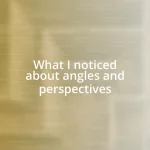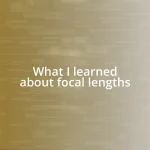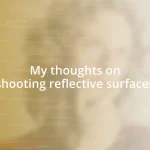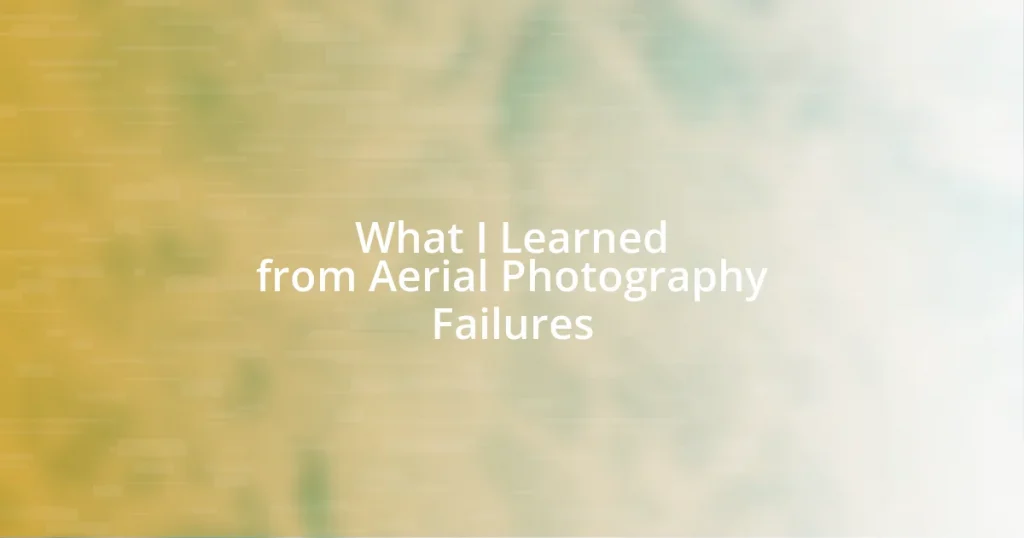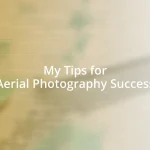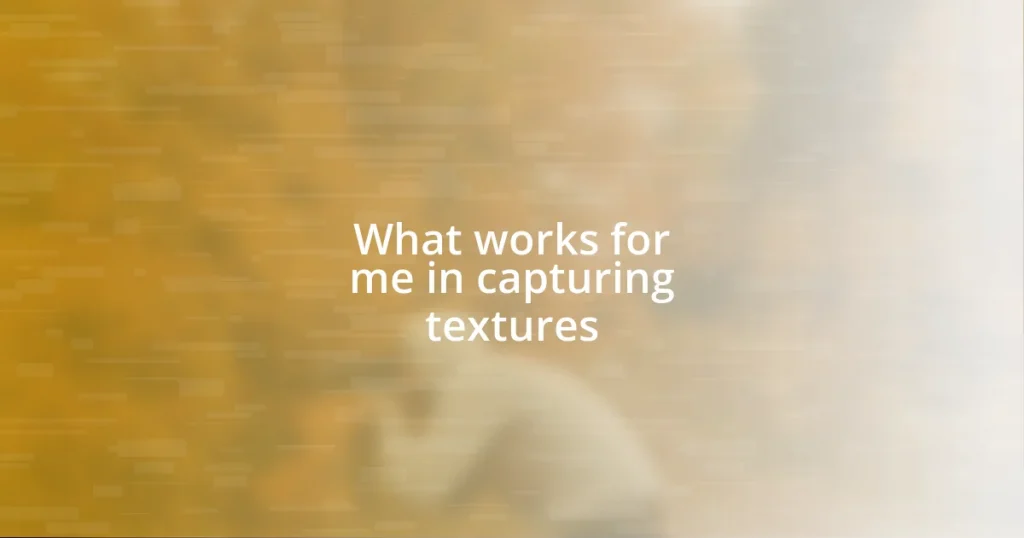Key takeaways:
- Understanding environmental conditions and conducting thorough pre-flight checks is crucial to avoid mishaps in aerial photography.
- Monitoring battery life and equipment quality can help prevent last-minute failures and poor image results during shoots.
- Planning, mastering manual camera settings, and varying composition angles significantly enhance the quality of aerial photographs.

Understanding Aerial Photography Failures
Aerial photography failures can stem from a variety of factors, often leaving us feeling frustrated and disheartened. I vividly remember a time when my drone malfunctioned mid-flight, resulting in a heart-stopping crash. It’s moments like these that make you reflect: what could I have done differently to avoid this mishap?
One key aspect of understanding these failures is recognizing the role of environmental conditions. I once shot a landscape during a gusty day, and the wind completely disrupted my shots. Have you ever battled against nature while trying to capture the perfect image? It makes you appreciate how crucial it is to check the weather and surroundings beforehand.
Lastly, the technical side of aerial photography cannot be overlooked. I recall struggling with camera settings that were not optimized for aerial capture, resulting in grainy images. This experience taught me the value of preparation and practice—how often do we rush into the exciting moment without mastering our tools? Skipping this step can lead to costly setbacks that could have been avoided.

Common Mistakes in Aerial Photography
I’m excited to dive into the common mistakes that even seasoned aerial photographers can make. For instance, overlooking battery life is a huge blunder. I remember a particularly stunning location I wanted to capture at sunset. My drone took off beautifully, but just as the sky lit up with vibrant colors, the battery alarm began beeping. I had to cut my session short, leaving me with only half the shots I needed. Lesson learned: always monitor battery levels and plan your shoots accordingly!
Another mistake that often gets overlooked is the importance of a proper pre-flight checklist. I rushed through my preparations on one occasion, skipping vital steps like calibrating the compass. Right in the middle of my shoot, my drone drifted unexpectedly, and I could only gasp as it veered off course. It taught me a fundamental lesson: a little time spent on thorough pre-flight checks can save a lot of heartache later.
Lastly, I can’t stress enough how crucial post-processing is. I once finished a shooting session, only to realize that many of my images were underexposed. In my excitement during the shoot, I neglected to adjust my settings as the light changed, which left me with less than stellar results. I think back to that moment and remind myself that taking time to edit thoughtfully can elevate a mediocre shot to something truly special.
| Common Mistakes | Personal Experience |
|---|---|
| Overlooking Battery Life | Had to cut a sunset shoot short due to low battery, realizing I missed out on capturing stunning colors. |
| Rushing Pre-Flight Checks | Skimmed through checks and experienced a drift mid-shoot due to not calibrating the compass properly. |
| Neglecting Post-Processing | Captured underexposed images because I didn’t adjust settings for changing light during the shoot. |

Learning from My Own Failures
Reflecting on my own aerial photography journey, I’ve encountered several failures that have reshaped my approach. One particular time, during a much-anticipated trip, I was so eager to take flight that I neglected to do a thorough equipment check. The moment I took off, my heart sank as I realized my camera settings were completely off. The shots I envisioned turned into blurry imitations of what I had hoped for, reminding me that impatience can lead to great disappointment.
- Ignoring Equipment Checks: I once flew in a spectacular location without verifying the camera’s focus, resulting in yet another blunder.
- Overconfidence: I believed I had mastered my drone, but a sudden gust of wind taught me to never underestimate nature’s power.
- Skipping Practice: Failing to practice before an important shoot left me fumbling with my controls, which can be disheartening in the heat of the moment.
Learning from each misstep has prompted me to embrace a more mindful process. Each failure is a stepping stone, deepening my understanding and sparking a renewed passion for aerial photography. Reflecting on these experiences fuels my determination to improve, reminding me that setbacks often lead to success when met with the right mindset.
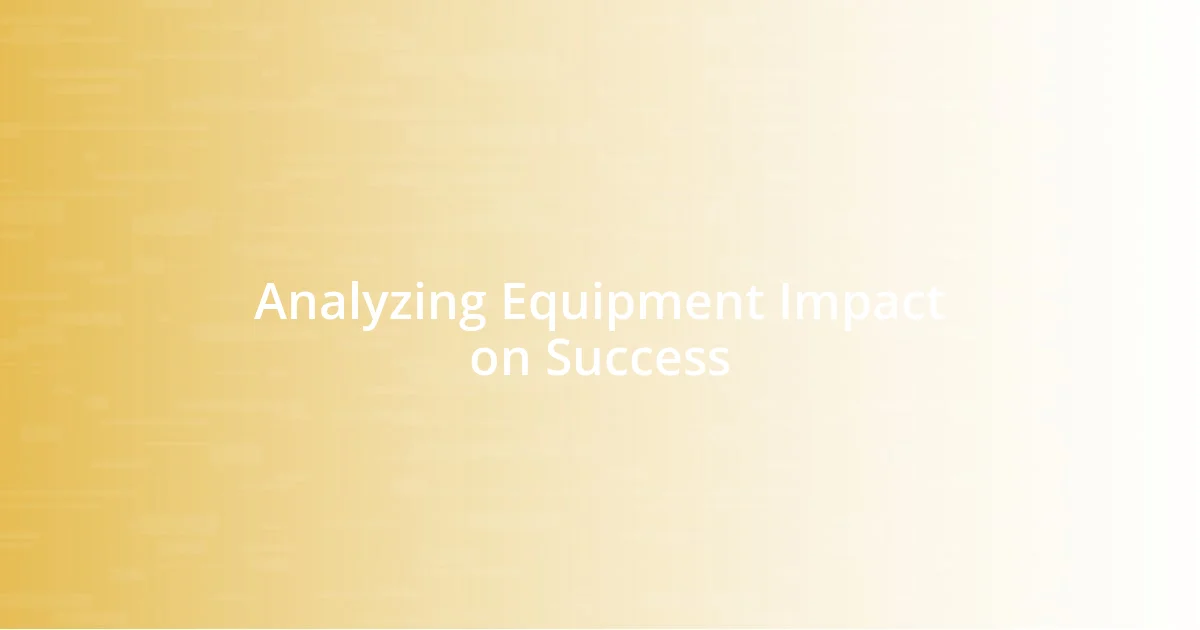
Analyzing Equipment Impact on Success
When I look back at my aerial photography experiences, I realize that the right gear can make or break a shoot. There was one outing when I decided to use a lower-quality lens because I thought it would be fine for a casual shoot. Instead, I ended up with images that lacked the crisp detail I longed for. It’s amazing how equipment quality can directly influence the final outcome. Have you ever used a lens that just didn’t deliver? I can certainly relate, and I learned that investing in quality gear is essential.
On another occasion, I remember tackling a rather windy day with a drone that had a reputation for stability. However, during flight, I discovered that the sensors weren’t calibrated properly, which made my drone a bit temperamental. It took some nerve-wracking moments for me to regain control. This experience opened my eyes to the importance of not just having good equipment, but also ensuring that it’s in optimal condition before I take to the skies. Have you ever faced unexpected challenges with your equipment? That renewed focus on pre-flight checks has been a game-changer for me.
In the world of aerial photography, even the best tools have limitations. I once tried to capture a sweeping landscape just before dusk. Unfortunately, my camera couldn’t handle the low light, resulting in far too much noise in the images. It was a bitter disappointment, but I took it as a sign to research gear that performs well in challenging conditions. The lesson here is clear: knowing the strengths and weaknesses of your equipment allows you to make informed decisions that enhance your chances of success. What have your gear challenges taught you? Trust me, this awareness is invaluable for crafting captivating aerial shots.

Strategies for Better Aerial Shots
Let’s dive into some strategies that can help elevate your aerial photography game!
One vital strategy I’ve embraced is the art of planning. I distinctly remember a time I arrived at a stunning location without having done my homework. I didn’t consider the time of day or weather conditions, and I ended up with mediocre shots. Now, I always scout locations ahead of time and check the weather forecast. Have you ever been caught off guard by the elements? Planning not only saves you from disappointment but also enhances the creativity in your shots.
I also learned the importance of mastering manual settings. In my early days, I relied heavily on automatic settings, which left me fighting against the camera’s choices instead of harnessing my creative vision. For example, on a bright sunny day, my drone camera overexposed images, making them washed out. Adjusting to manual mode gave me the control I craved, allowing me to capture the vibrancy of landscapes as they truly are. So, how comfortable are you with manual settings? I assure you, taking the time to learn them can transform your results.
Lastly, the composition of your shots is equally critical. I can’t help but recall a moment when I took a series of aerial pictures, but they felt flat and uninspired. It wasn’t until I revisited the images that I realized my perspectives were all too similar. Now, I make a conscious effort to vary my angles and incorporate leading lines or interesting foregrounds. Have you ever looked back at your photos and felt they lacked depth? Changing your vantage point can breathe life into your work and offer new storytelling opportunities.



